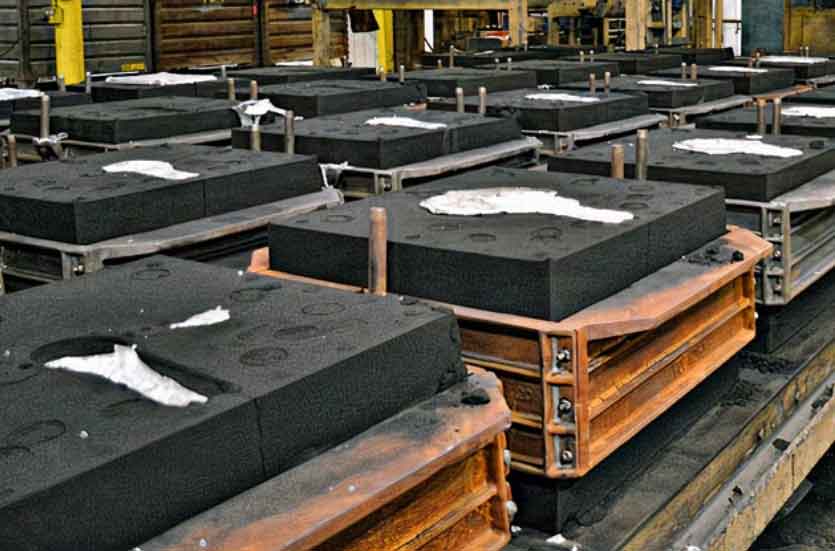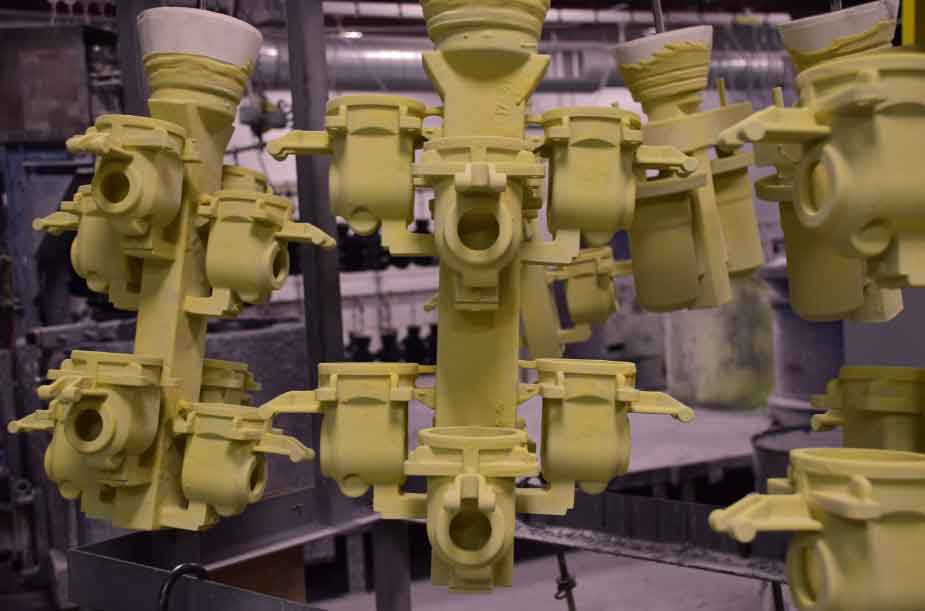Resin sand casting and investment casting are two widely used casting methods in manufacturing. Let’s compare these two methods:
Resin Sand Casting:

Advantages:
- Design Flexibility: Resin sand casting allows for the production of complex shapes, intricate details, and thin-walled components that may be challenging to achieve with investment casting.
- Cost-Effectiveness: Resin sand casting is generally more cost-effective, especially for small to medium-sized production runs, as it requires less expensive tooling and setup compared to investment casting.
- Material Flexibility: Resin sand casting supports a wide range of metal alloys, providing flexibility in material selection to meet specific application requirements.
- Surface Finish: Resin sand casting can produce castings with good surface finish and dimensional accuracy, reducing the need for extensive post-casting machining or surface treatments.
- Rapid Prototyping: Resin sand casting enables the quick production of functional prototypes, facilitating faster product development cycles and design iterations.
Considerations:
- Mold Preparation Time: The preparation and curing time of the resin sand mold can be relatively longer compared to investment casting, extending the overall production time, particularly for larger or more intricate molds.
- Lower Production Efficiency: Resin sand casting generally has a slower production rate compared to investment casting, making it less suitable for high-volume production.
- Mold Fragility: Resin sand molds can be more fragile compared to the ceramic or wax molds used in investment casting, requiring careful handling and transportation to avoid mold breakage.
Investment Casting:

Advantages:
- High Precision and Surface Finish: Investment casting offers excellent dimensional accuracy, high surface finish, and intricate detail reproduction, making it suitable for parts with tight tolerances and fine details.
- Wide Material Selection: Investment casting supports a wide range of materials, including ferrous and non-ferrous alloys, allowing for versatility in material choice.
- Complex Shapes and Thin Walls: Investment casting can produce components with complex shapes, thin walls, and intricate internal geometries, making it suitable for challenging designs.
- Reduced Post-Casting Operations: Investment casting often requires minimal post-casting machining or surface treatments due to the high precision and surface finish achieved during the casting process.
Considerations:
- Higher Tooling Costs: Investment casting requires the production of wax patterns and ceramic molds, resulting in higher tooling costs compared to resin sand casting.
- Longer Lead Times for Tooling: The fabrication of wax patterns and ceramic molds for investment casting may require longer lead times compared to resin sand casting.
- Limited Size and Weight: Investment casting is typically limited to smaller and lighter components, as the wax patterns and ceramic molds have size constraints compared to resin sand casting.
- Higher Costs for Small Production Runs: Investment casting may have higher costs for small production runs due to the tooling expenses, making it more economical for larger production quantities.
In summary, resin sand casting offers design flexibility, cost-effectiveness for small to medium production runs, and the ability to use a wide range of materials. It is suitable for complex shapes and components with thinner walls. Investment casting excels in high precision, excellent surface finish, and the production of intricate and detailed parts. It is particularly advantageous for smaller and lighter components. The choice between resin sand casting and investment casting depends on factors such as part complexity, production volume, desired surface finish, material requirements, and cost considerations.
